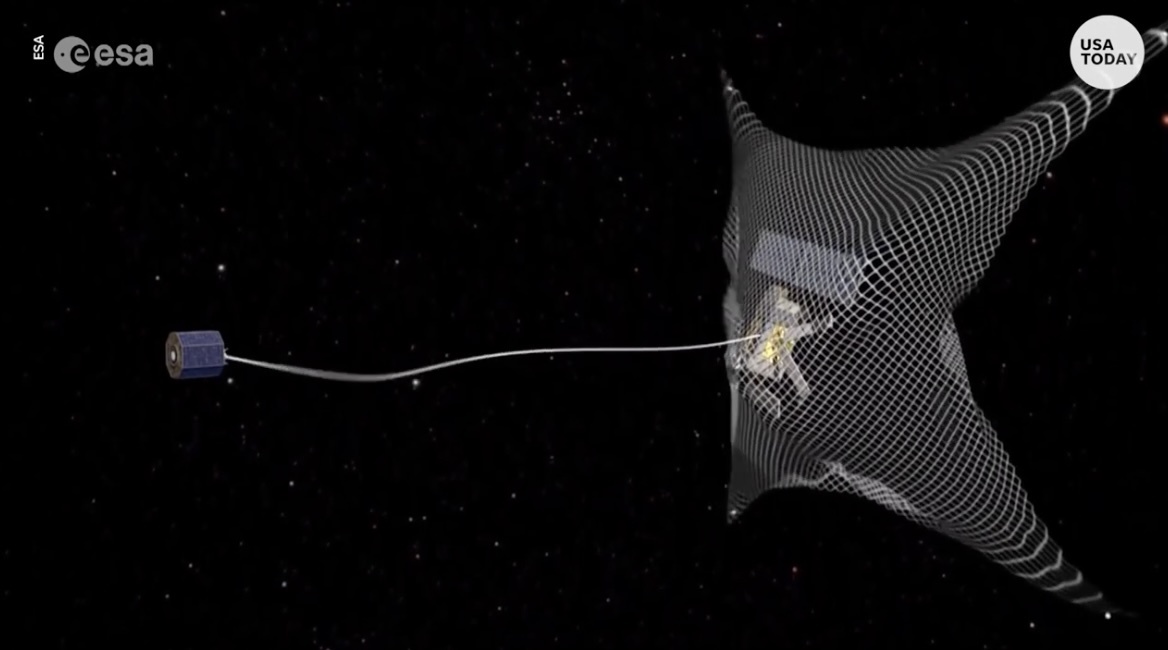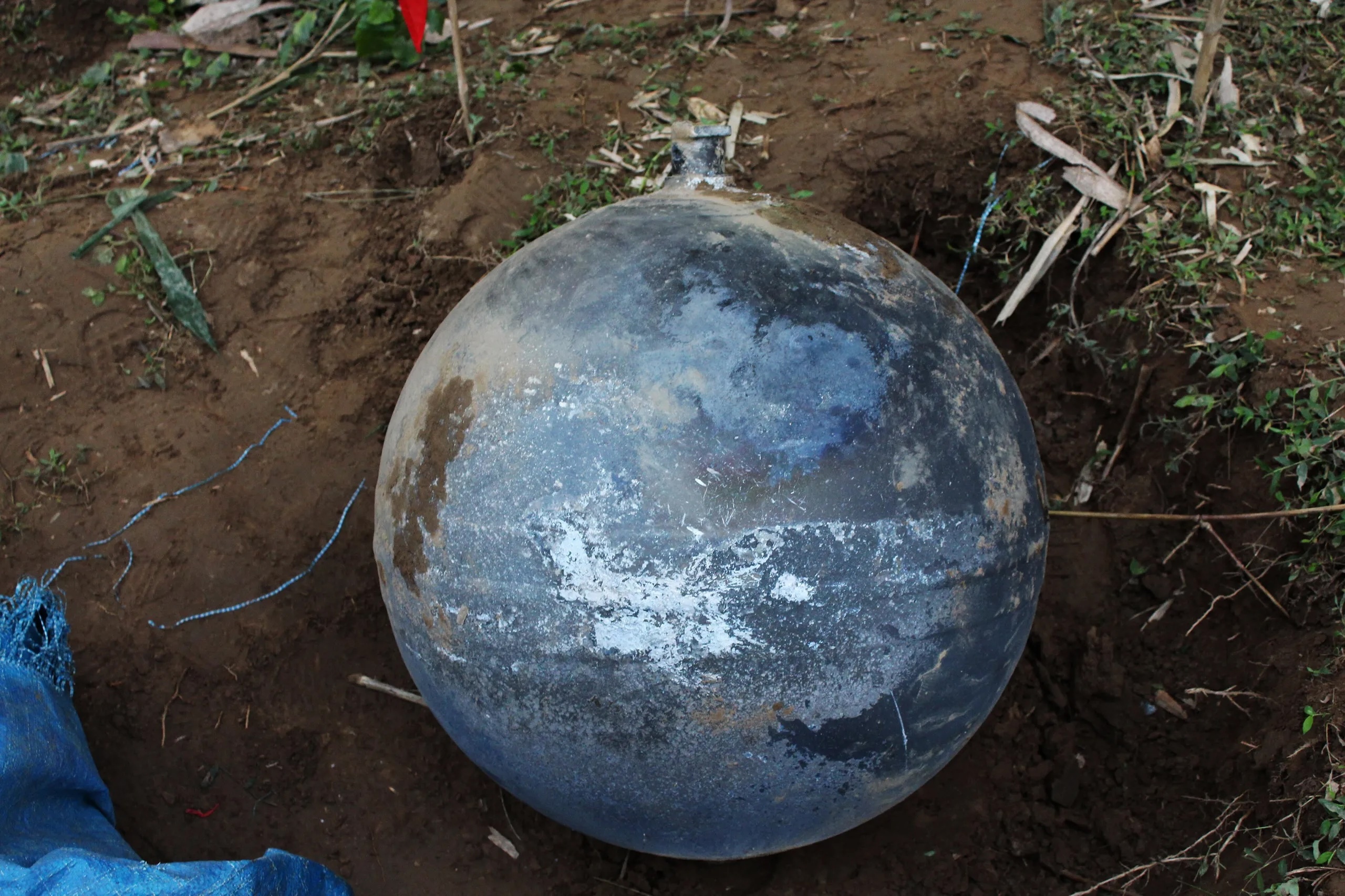30.12.2024
Defunct satellites and other detritus often remain in orbit above Earth, creating a growing space junkyard that poses a threat to our future in space. Here's what's being done to combat it.

Spacefaring countries have for decades been sending thousands upon thousands of satellites and other objects into orbit, where they have become an integral component of modern society.
From hundreds of miles above Earth, satellites can help scientists make observations about our planet and the surrounding universe, or even provide us access to television and entertainment.
But what happens when those aging satellites become defunct and are no longer active?
Well, many of those objects - or fragments of them - are still there, languishing above Earth in an ever-expanding space junkyard. Because they're expensive to remove, retired satellites are often left in a low-Earth orbit, where their presence poses a growing threat to both future satellite launches and crewed space missions, according to NASA.
Just this November, an incoming piece of space junk prompted the International Space Station to take action to maneuver itself out of harm's way. A Russian cargo ship docked at the space station fired its thrusters for more than five minutes to "provide an extra margin of distance" for the hunk of debris, NASA said. While the inbound object, which was debris from a defunct meteorological satellite, was not necessarily on a collision course with the station, NASA said the evasive maneuver provided a little more cushion for it to safely whizz by.
All of this debris floating around in space could lead to a theoretical scenario known as the Kessler Syndrome. Here's what to know about space junk, why it's a problem and what's being done about it.

This picture taken on Jan. 2, 2016 shows a metal ball that landed in the northern province of Tuyen Quang in Vietnam. Three large metal balls believed to be space junk landed in the country's remote north over the course of a week in 2016, Army officials said.
Also called space debris, space junk is comprised of non-operational satellites and other human-made objects that continue to hurtle around Earth's orbit long after they served their purpose.
Spacecrafts, spent rocket boosters and even astronauts' lost tool bagscan combine with old satellites to create a halo of orbital debris that lasts for decades.
Since the dawn of the space age in the 1950s, humankind has launched around 50,000 tons of material into, according to the ESA, which cited data from the U.S Space Surveillance Network. The total mass of all space objects in orbit is estimated to be more than 13,000 tons as of September 2024. And of the 19,590 satellites launched into space since 1957, 13,230 of them - 10,200 of which remain operational - continue to whiz around in space at high speeds as of September, the space agency says.
Why is space junk a problem?
The risk of all these new objects firing off into space?
When combined with all of the satellites that have been there for decades, the ESA warns that the rising threat of collisions puts humanity's future in space into question.
In a 2009 incident, two satellites crashed into one another over Siberia. Not only were both satellites - one of which was still active - destroyed, but the collision created a whole bunch more debris in the process, according to a report at the time from the American Scientist.
Up until December 2022, the International Space Station had moved out of the way of space junk 32 times since 1999, according to a 2022 quarterly report from NASA. By October 2023, that figure had jumped to 37 orbital debris avoidance maneuvers, including two in August of that year alone.
When the ISS maneuvered away from space debris in November this year, it marked its 39th Pre-Determined Avoidance Maneuver.
It's also not uncommon for some of those objects to crash back into Earth, scientists say.
Earlier this year, a family in Naples, Florida, filed a claim against NASA for more than $80,000 in damages to their home after a chunk of space debris from the International Space Station tore through their roof.
What is the Kessler Syndrome?
All of this adds up to the likelihood, the ESA warns, that a theoretical scenario known as the Kessler Syndrome could become reality: That left unchecked, the multiplying detritus and subsequent cascade of collisions could make Earth's orbit unusable for space travel.
“We are seeing a dramatically increased use of space, but still insufficient technology to prevent the risks that follow," Holger Krag, ESA's head of Space Safety, said in a statement last year.
What are NASA, ESA, others doing about space debris?
The movement to crack down on the hazardous debris whizzing through outer space has seemed to strengthen in recent years.
Many scientists have for years sounded the alarm about Earth's rapidly overcrowding orbit, but now the European Space Agency, NASA and other organizations across the globe are beginning to take more concrete action. Last year, ESA adopted the Zero Debris Charter, which seeks a global commitment to nearly eradicate so-called space junk by 2030.
“As space infrastructure has become the backbone of our modern society, the proliferation of space debris is threatening our way of life," Director General Josef Aschbacher said in a statement a the time. "Now is the time to act as a community to channel our collective efforts."
In the United States, NASA has its own Orbital Debris Program based in Houston, Texas tasked with creating less orbital debris and designing equipment to track and remove space junk.
Quelle: USA TODAY

